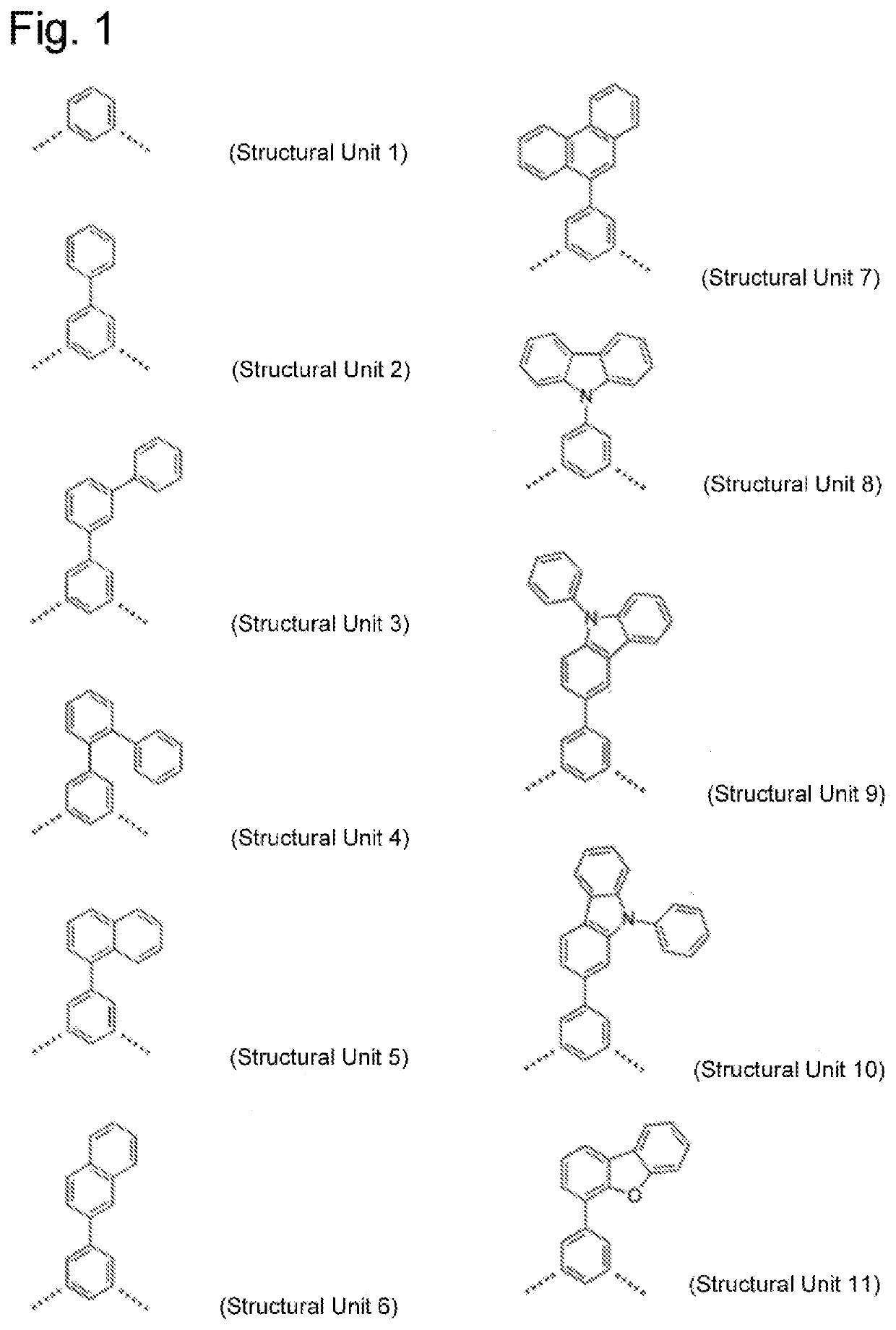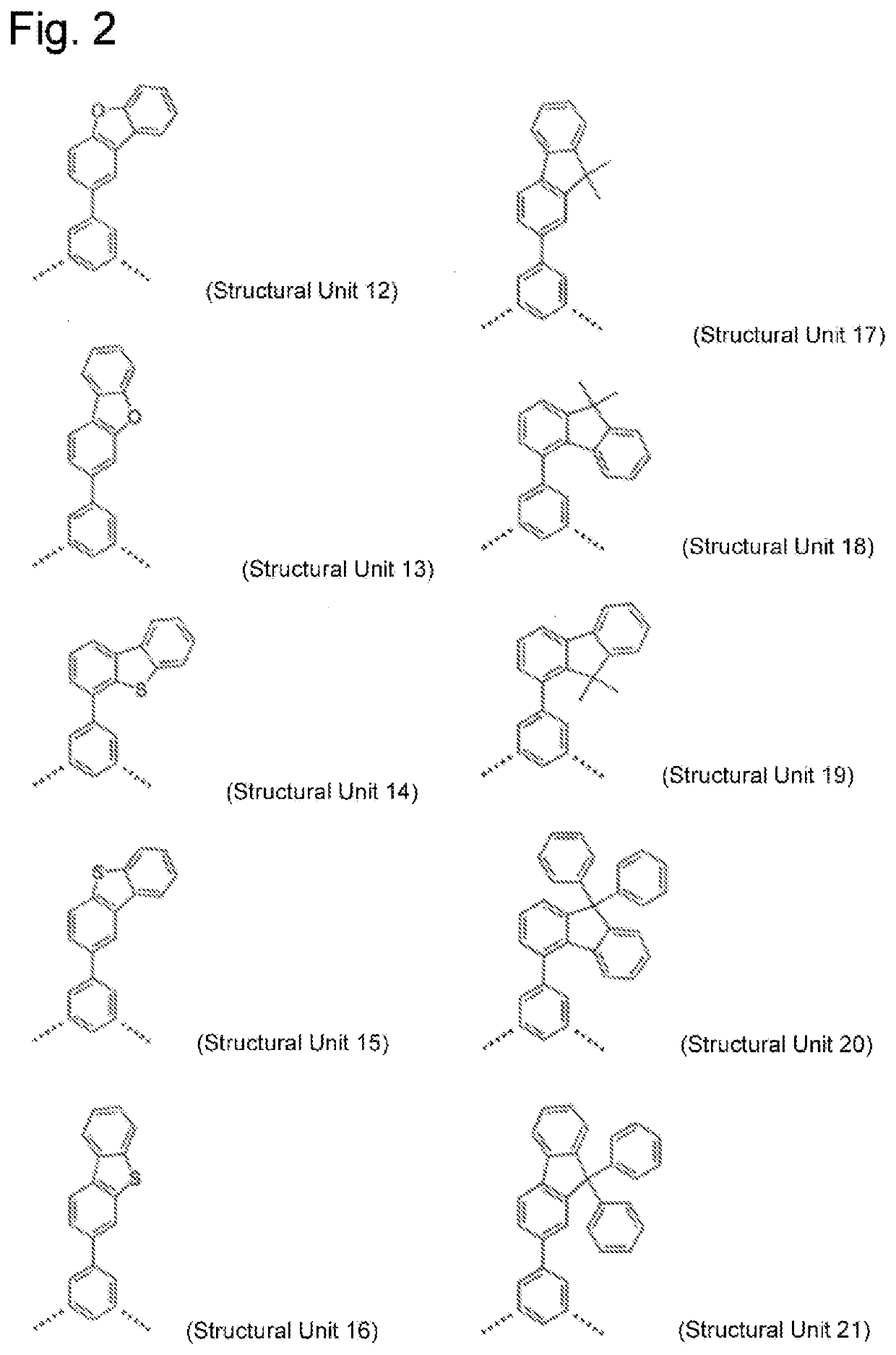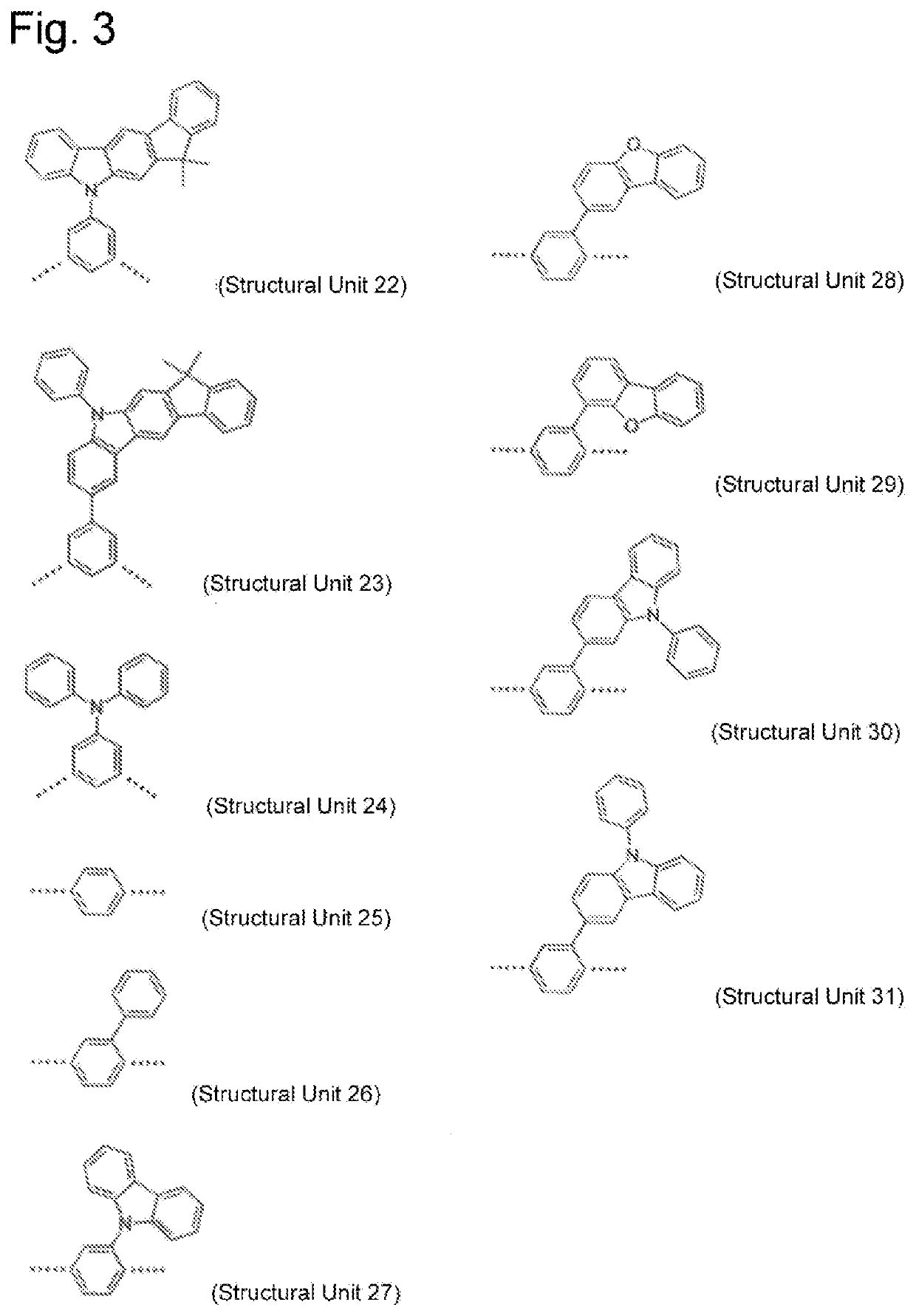High molecular weight triarylamine compound comprising terphenyl structure in molecular main chain and organic electroluminescent element comprising said high molecular weight compound
a triarylamine and compound technology, applied in the direction of coatings, solid-state devices, semiconductor devices, etc., can solve the problems of difficult to deposit a uniform thin film on a large substrate, low material usage efficiency of vacuum deposition methods, and high production costs. , to achieve the effect of good hole injectionability, excellent electron blocking capability, and wide band gap
- Summary
- Abstract
- Description
- Claims
- Application Information
AI Technical Summary
Benefits of technology
Problems solved by technology
Method used
Image
Examples
example 1
(Synthesis of High Molecular Weight Compound A)
[0244]The following components were placed in a reaction vessel whose internal air was replaced with nitrogen, and nitrogen gas was passed through the reaction vessel for 30 minutes:
[0245]5.0 g of intermediate 1;
[0246]1.8 g of 1,3-dibromobenzene;
[0247]0.8 g of intermediate 2;
[0248]6.9 g of tripotassium phosphate;
[0249]9 ml of toluene;
[0250]5 ml of water; and
[0251]27 ml of 1,4-dioxane.
[0252]Then, 1.4 mg of palladium(II) acetate and 11.5 mg of tri-o-tolylphosphine were added, and the mixture was heated and stirred at 87° C. for 14 hours. Then, 17 mg of phenylboronic acid was added and the mixture was stirred for 1 hour, and then 242 mg of bromobenzene was added and the mixture was stirred for 1 hour. Then, 50 ml of toluene and 50 ml of 5 wt % aqueous solution of N,N-sodium diethyldithiocarbamate were added, and the mixture was heated and stirred under reflux for 2 hours. After the mixture was cooled down to room temperature, a separation ...
example 2
(Synthesis of High Molecular Weight Compound B)
[0259]The following components were placed in a reaction vessel whose internal air was replaced with nitrogen, and nitrogen gas was passed through the reaction vessel for 30 minutes:
[0260]4.0 g of intermediate 1;
[0261]3.6 g of 1,4-dibromobenzene;
[0262]0.9 g of intermediate 2;
[0263]5.2 g of tripotassium phosphate;
[0264]7 ml of toluene;
[0265]4 ml of water; and
[0266]22 ml of 1,4-dioxane.
[0267]Then, 1.1 mg of palladium(II) acetate and 8.7 mg of tri-o-tolylphosphine were added, and the mixture was heated and stirred at 83° C. for 7.5 hours. Then, 17 mg of phenylboronic acid was added and the mixture was stirred for 1 hour, and then 196 mg of bromobenzene was added and the mixture was stirred for 1 hour. Then, 100 ml of toluene and 100 ml of 5 wt % aqueous solution of N,N-sodium diethyldithiocarbamate were added, and the mixture was heated and stirred under reflux for 2 hours. After the mixture was cooled down to room temperature, a separatio...
example 3
(Synthesis of High Molecular Weight Compound C)
[0274]The following components were placed in a reaction vessel whose internal air was replaced with nitrogen, and nitrogen gas was passed through the reaction vessel for 30 minutes:
[0275]3.4 g of intermediate 1;
[0276]2.1 g of intermediate 3;
[0277]0.5 g of intermediate 2;
[0278]4.7 g of tripotassium phosphate;
[0279]7 ml of toluene;
[0280]4 ml of water; and
[0281]21 ml of 1,4-dioxane.
[0282]Then, 5 mg of tetrakis(triphenylphosphine)palladium(0) was added, and the mixture was heated and stirred at 90° C. for 19.5 hours. Then, 12 mg of phenylboronic acid was added and the mixture was stirred for 1 hour, and then 165 mg of bromobenzene was added and the mixture was stirred for 1 hour. Then, 50 ml of toluene and 50 ml of 5 wt % aqueous solution of N,N-sodium diethyldithiocarbamate were added, and the mixture was heated and stirred under reflux for 2 hours. After the mixture was cooled down to room temperature, a separation operation was performe...
PUM
| Property | Measurement | Unit |
|---|---|---|
| thickness | aaaaa | aaaaa |
| thickness | aaaaa | aaaaa |
| thickness | aaaaa | aaaaa |
Abstract
Description
Claims
Application Information
 Login to View More
Login to View More - R&D
- Intellectual Property
- Life Sciences
- Materials
- Tech Scout
- Unparalleled Data Quality
- Higher Quality Content
- 60% Fewer Hallucinations
Browse by: Latest US Patents, China's latest patents, Technical Efficacy Thesaurus, Application Domain, Technology Topic, Popular Technical Reports.
© 2025 PatSnap. All rights reserved.Legal|Privacy policy|Modern Slavery Act Transparency Statement|Sitemap|About US| Contact US: help@patsnap.com



